History of the Canton Fair
Canton Fair Through the Years: A Legacy of Global Trade and Economic Transformation
The Historical Significance of the Canton Fair
The Canton Fair, officially known as the China Import and Export Fair, stands as China's most prestigious and longest-running trade exhibition. Established in 1957, this biannual event has grown from a modest gathering of international traders to the world's largest trade fair, serving as a barometer for China's economic health and a bridge connecting Chinese manufacturers with global markets.
What began as a platform to showcase China's agricultural products has transformed into a comprehensive exhibition featuring over 25,000 exhibitors across 50 product categories. The fair's evolution mirrors China's economic transformation from an agrarian society to the world's manufacturing powerhouse and now to a leader in innovation and technology.
The Canton Fair's significance extends beyond commerce. It has been instrumental in China's diplomatic relations, particularly during periods of international isolation. The fair provided a rare channel for foreign exchange and international engagement when few others existed, making it a critical component of China's economic and foreign policy strategy.
Canton Fair by the Numbers
Years of History
Continually held since 1957
Peak Visitors
Record attendance in 2012
1973 Trade Share
Of China's foreign trade
Current Exhibitors
Across 50 categories
Canton Fair Through The Decades
Birth of the Fair: Historical Era (1957-1978)
April 1957: Inception
The first Chinese Export Commodities Fair (later renamed Canton Fair) opened in the Sino-Soviet Friendship Building with just 1,223 attendees from 19 countries. Primarily showcasing agricultural products, this modest beginning would grow into China's most important trade event.
1958-1959: Early Growth
The fair quickly outgrew its original venue, moving first to the Qiaoguang Road Exhibition Hall, then to the Qiyi Road Exhibition Hall which offered 2.5 times more space. This rapid expansion reflected China's growing engagement with international trade despite political challenges.
1973: Economic Dominance
At its peak during this era, the Canton Fair accounted for an astonishing fifty percent of China's national foreign trade exchange. This period solidified the fair's role as China's primary window to the global economy during years of relative isolation.
1974: Liuhua Complex
The fair moved to its longest-serving venue, the purpose-built Chinese Export Commodities Fair Complex (Liuhua Exhibition Centre). This modern facility could accommodate the fair's growing scale and sophistication as China's industrial capacity expanded.
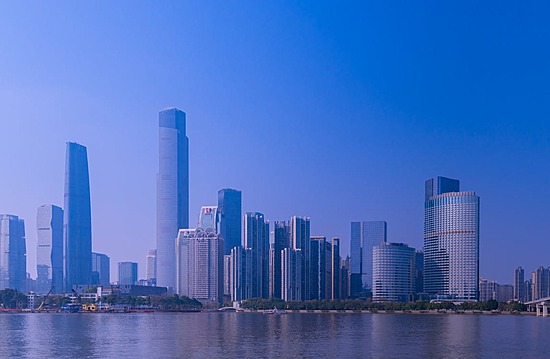
The modern Guangzhou skyline stands in contrast to the fair's humble beginnings, symbolizing China's economic transformation
Opening & Reform: Economic Expansion (1979-2000)
1979: New Era
With Deng Xiaoping's economic reforms, the Canton Fair entered a new phase. Private companies began exhibiting alongside state-owned enterprises, and the fair's organization was delegated to a State-sponsored corporation, marking the beginning of market-oriented reforms.
1980s: Modernization
The fair underwent significant administrative reforms and facility upgrades to accommodate China's growing manufacturing sector. Exhibition spaces were reorganized to better showcase China's expanding range of industrial products and consumer goods.
1999: Digital Transition
Recognizing the internet's potential, the Canton Fair launched its first website. The fair also established an intellectual property rights complaints station, reflecting China's growing engagement with international trade norms and standards.
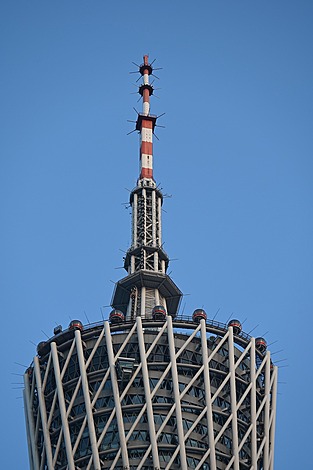
The Canton Tower symbolizes Guangzhou's modernization and global aspirations during the reform era
Internationalisation: Post-WTO Era (2001-2019)
2001: WTO Membership
China's accession to the World Trade Organization marked a new chapter for the Canton Fair. The fair opened to foreign companies and underwent radical expansion with the new Pazhou Complex, reflecting China's full integration into the global trading system.
2003: SARS Challenge
The Spring 2003 session saw foreign visitor numbers crash to 23,128 due to the SARS outbreak. In response, the fair introduced 'Canton Fair Online' as a web portal, marking the beginning of digital transformation that would prove crucial years later.
2006: Rebranding
Reflecting China's evolving trade position, the fair was renamed from 'China Export Commodities Fair' to 'China Import and Export Fair'. This change acknowledged China's growing role as both exporter and importer in global trade.
2010s: Specialization
The fair was reorganized into three phases with 50 specialized industry sectors (up from 32), allowing for more focused exhibitions. Attendance peaked at 210,000 visitors in 2012, cementing the fair's position as the world's largest trade exhibition.
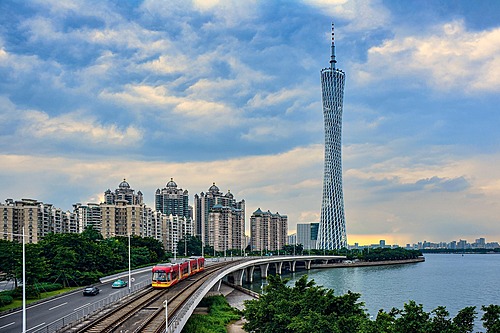
The illuminated Canton Tower represents Guangzhou's emergence as a global city during China's WTO era
The Show Goes (On)line: Post-Covid Era (2020–Present)
2020: Pandemic Response
The COVID-19 pandemic forced the fair to go fully online for the first time in its history. While virtual exhibitions couldn't fully replicate the in-person experience, they maintained trade connections during global lockdowns and demonstrated the fair's adaptability.
2021: Hybrid Model
As pandemic restrictions eased, the fair adopted a hybrid format combining in-person and online participation. The Pazhou complex expanded with Area D, increasing exhibition space by 40% to accommodate evolving needs and safety protocols.
2023: New Dynamics
The post-pandemic era has seen shifting trade patterns with Western buyers declining as a proportion of attendees, offset by growing participation from Asia, Africa, Russia and the Middle East. The fair continues to evolve as China's economic priorities shift toward high-tech and sustainable industries.
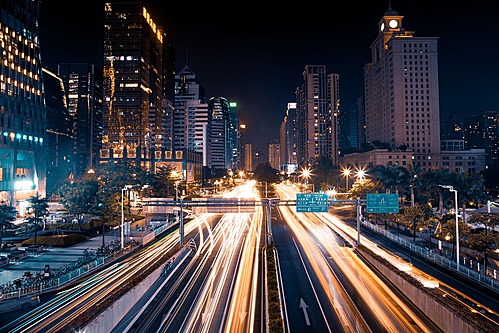
Zhujiang New Town's futuristic skyline reflects Guangzhou's continued economic transformation in the post-pandemic era
Canton Fair Museum
Located on the bottom floor of the administration building within the Pazhou Complex, the Canton Fair Museum offers visitors a comprehensive journey through the fair's remarkable history. The museum's interactive exhibits showcase rare artifacts, historical photographs, and multimedia presentations that bring to life the fair's evolution from its humble beginnings to its current status as the world's largest trade fair.
Highlights include replicas of early exhibition booths, displays of significant products that debuted at the fair, and a digital timeline that connects the fair's development with China's broader economic transformation. The museum also features temporary exhibitions focusing on specific themes or anniversaries, making each visit a unique experience.
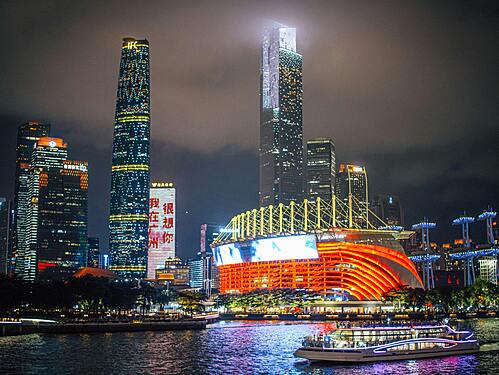
The modern Guangzhou Stadium symbolizes the city's ability to host world-class events, much like the Canton Fair
Experience the Legacy of Global Trade
The Canton Fair's remarkable journey from a small trade exhibition to the world's largest trade fair mirrors China's own economic transformation. As the fair continues to evolve in the digital age, it remains a vital platform for international commerce and a testament to China's enduring role in global trade.

